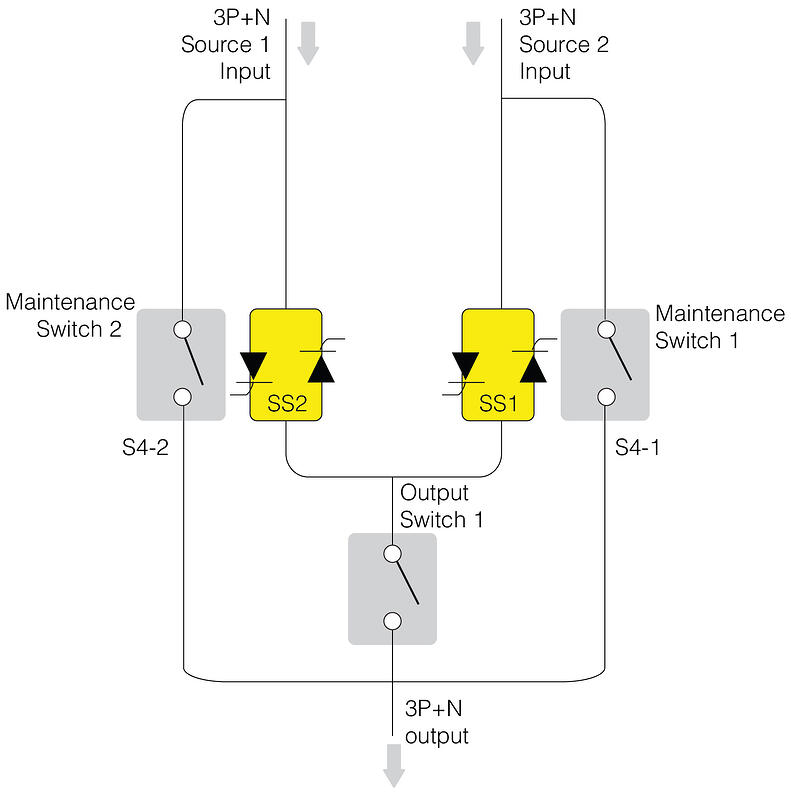Static Transfer Switch vs. Automatic Transfer Switch
A switch is an essential component of a UPS system that converts the system to a stable power source in the event that the current power source is turned off. This can be done with one of two different options. One is an automatic transfer switch and the other is a static transfer switch. Depending on how they work, they are ideal for two different purposes. Choosing the right switch for the job ensures your business is always on.
What is Automatic Transfer Switch (ATS)?
ATS (automatic transfer switch) is mainly used in emergency power supply systems, and will automatically connect the load circuit from one power source to another (backup) power switch equipment to ensure continuous and reliable operation of critical loads. The ATS mechanical structure uses the contactor as the switching element to perform the switching function, and the intermediate relay or logic control module completes the secondary circuit control function. wait for failure. Furthermore, if the load is large, the conversion time is relatively long, and the load will be powered off if it exceeds 100 milliseconds.
What is Static Transfer Switch (STS)?
STS (Static Transfer Switch), is an automatic static switching equipment designed to transfer critical loads between two independent AC power sources without interruption or with a transfer time of less than a cycle (20ms). Static transfer switches or STSs are not mechanical parts, but use semiconductors to detect small changes in power and switch to a more stable source. The STS has no moving parts and is extremely fast, switching to a stable power supply in less than 4 milliseconds, even under extreme temperatures and conditions.
The STS consists of Silicon Controlled Rectifiers (SCRs), control and sensing circuits that monitor incoming power and divert critical loads connected to auxiliary power in the event of a primary power failure.

The Difference between ATS and STS
ATS dual power transfer switch is a foot-operated structure, with isolating switch, load switch or dictator itself as the conversion execution component, and completes the automatic conversion of dual-circuit switching power supply by the method of motor driver and its electromagnetic drive, in which the motor driver Due to its complicated structure, the ATS type dual power switch is less reliable than the electromagnetic drive type dual power switch. The ATS automatic transfer switch is generally used for large load conversion, and the conversion time is relatively long. The motor driver type dual power switch needs 1.5 Above S, the electromagnetic-driven dual power switch can quickly achieve 80ms. Automatic Transfer Switches or ATSs are typically used to transfer power from mail to auxiliary or emergency systems, including generators.
STS static transfer switch is an electronic circuit structure, composed of intelligent controller, high-speed thyristor, and isolation switch. Compared with the traditional ATS automatic transfer switch, the STS static transfer switch has a conversion rate of ms level (≤8 m s), provides rapid load change (usually 1/4 cycle time), and can complete the continuous conversion of the power circuit. It is not easy to cause IT loads to turn off the power. It can not only provide reliable power supply system to the load, but also ensure the safety factor of STS when different switching power supply phases are converted.

